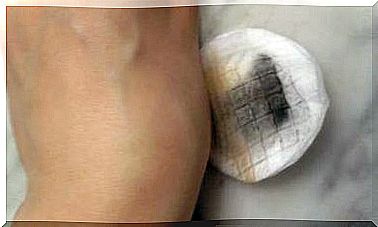Low-impact Cardiovascular Training: Exercises And Recommendations

Many people associate cardiovascular exercise with high-impact physical activities such as running and jumping. However, it is also possible to do low-impact cardiovascular training by walking, cycling, swimming, and so on.
The advantage of this type of training is that due to the lack of impact, they do not cause additional stress on the joints. They are therefore ideal for people with physical limitations or for people recovering from injuries. What do you need to know about it? Discover some possibilities and recommendations.
What are the benefits of low-impact cardio training?
Low-impact cardiovascular training offers almost the same health benefits as more demanding activities. In fact, for some people they are even better. Below we will explain what the most important effects are.
Cardiovascular Health

Like any form of exercise, low-impact cardio training contributes to the care of the cardiovascular system. The regular practice of these types of workouts reduces the risk of conditions such as:
- high bloodpressure
- elevated cholesterol level
- heart attack
- stroke
If you have previously been diagnosed with heart disease, it is essential that you see your doctor or a specialist first. He or she can indicate which activities are most suitable for you and with what intensity you can train.
weight loss
In combination with a healthy and balanced diet, this form of cardiovascular training contributes to maintaining a healthy and balanced weight.
While the intensity and time spent exercising affect calorie burn, low-impact activities prevent the effects of a sedentary lifestyle.
Brain Health
According to a publication in the journal Neurology, low-impact cardiovascular exercise benefits brain health and reduces the risk of dementia. It also offers the following benefits:
- increases blood flow.
- reduces the risk of a stroke.
- improves memory.
- optimizes the mind.
At the same time, low-impact training also combats the decline in brain function associated with advancing age and also helps protect against the development of Alzheimer’s disease.
Chronic back pain
Low-impact cardiovascular exercise can help reduce chronic back pain, especially activities such as swimming and aqua jogging. The movement promotes circulation and helps to maintain and improve posture, in addition to promoting muscle elasticity and strength.
Low-impact cardiovascular workouts
A low-impact cardio workout includes several options. The advantage is that they are suitable for all groups of people, from children to the elderly. They are even recommended for people with physical problems. Of course, it is always best to consult a professional before starting.
Cycling: indoors and outdoors
Cycling is an excellent cardiovascular workout, whether you do it outdoors or indoors. What is particularly striking about this form of training, especially with indoor cycling (spinning), is that the intensity can be regulated. In this way, you can perform workouts of varying intensity depending on the needs and circumstances of each individual.
Cross trainer
Along with indoor cycling has come a type of training called indoor walking, which is performed on a cross trainer. This training follows the same structure as indoor cycling classes. The intensity can be controlled and is much better for the knees than running, in addition to involving more upper body muscles in the movements.
Swimming

A study published in the Journal of Exercise Rehabilitation demonstrates the health benefits of swimming. It doesn’t just help you take care of your cardiovascular health.
It also improves muscle strength and can help prevent ailments. It is actually suitable for everyone, because you can control the intensity and adapt the workouts to almost all needs.
Yoga
You may not realize it, but yoga also falls within the context of cardiovascular training as it usually focuses on working on flexibility and strength. However, there are disciplines within yoga that include low-impact aerobic work, such as vinyasa yoga.
To walk
Finally, walking is a complete cardiovascular workout in all its facets, from a simple walk to the Olympic discipline of race walking. That said, to get really good results you need to walk at a good pace for a longer period of time (more than 30 minutes).
What should you remember about low-impact cardiovascular training?
To do a truly low-impact cardiovascular workout, the first thing you need to keep in mind is the intensity. If the training is of a low intensity then the benefits will be lower and it will take more time to really feel the benefits.
Nevertheless, this type of training is preferable to a sedentary life under all circumstances. It’s even a good way to actively rest during intense exercise programs.
A good way to monitor intensity is to use a heart rate monitor and work in a range between 65 and 80% of maximum heart rate. This then lets you know if the level of intensity or effort you are putting in is sufficient to reap benefits.
Finally, it is worth remembering that in the case of pre-existing health problems, it is best to first consult a specialist. A pre-check can contribute to a safe and effective way of training.









